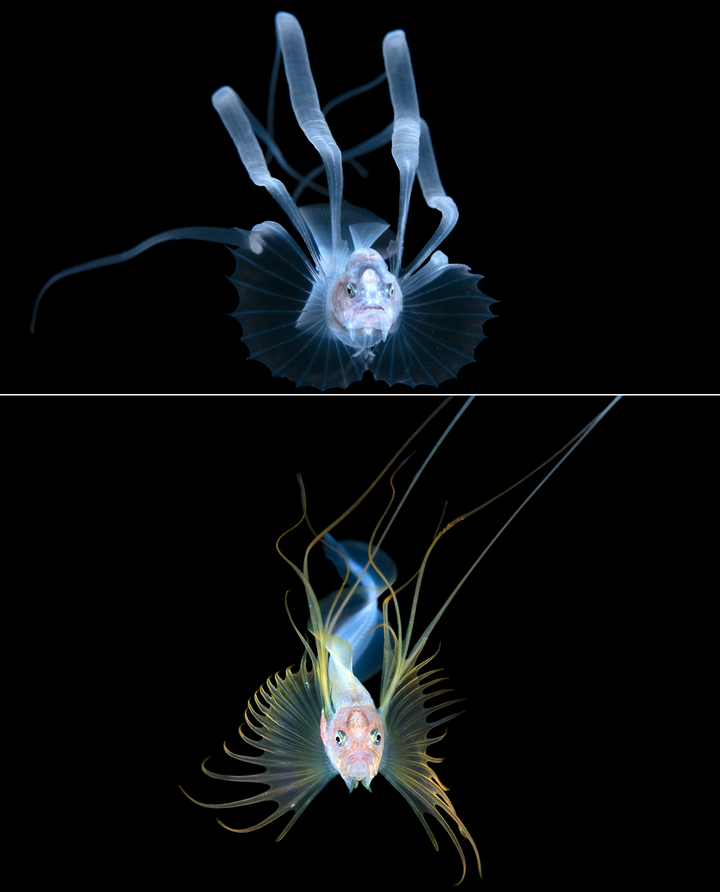Discovery and description of elaborate larval cusk-eels and the relationships among *Acanthonus*, *Tauredophidium*, and *Xyelacyba* (Teleostei: Ophidiidae)
 Fig. 2. Photos © Steven Kovacs.
Fig. 2. Photos © Steven Kovacs.
Abstract
The larvae of marine fishes often differ substantially in appearance from their adult forms. While sometimes visually striking, these larvae can be difficult to identify. Cusk-eels of the predominantly deep-sea family Ophidiidae have epipelagic larval stages that are remarkably diverse in appearance, and some of these larvae, such as the bony-eared assfish, Acanthonus armatus, are widely popular subjects for blackwater photographers. Recently, a larva was photographed and collected off the east coast of Florida that resembled a bony-eared assfish. Based on counts and DNA data, we identified this larva as a gargoyle cusk, Xyelacyba myersi, a species for which the larval stage has yet to be described. With an improved understanding of cusk-eel larval morphology, we found and identified a single larval specimen of the spiny blind brotulid, Tauredophidium hextii, collected from the eastern Indian Ocean in 1977, another species for which the larval stage has yet to be described. We describe these novel larvae, compare them to a newly caught larval Acanthonus from Hawai’i, and highlight morphological similarities and differences among them. Previous works have suggested a close relationship among the monotypic genera Acanthonus, Tauredophidium, and Xyelacyba, and we found four shared and derived larval characters that support these genera forming a clade. We then compared the adult morphology of these taxa using micro-computed-tomography scanning, finding six shared adult morphological traits, including an opercular-spine locking mechanism, that support these taxa forming a clade. Considering these findings and that more than a third of ophidiid genera are monotypic, we classify these three taxa in the same genus, Acanthonus, to highlight their relatedness. Our study demonstrates the scientific importance of images and specimens collected by blackwater divers for species identification and further highlights their significance in understanding evolutionary relationships.
Almetric and Dimension badges